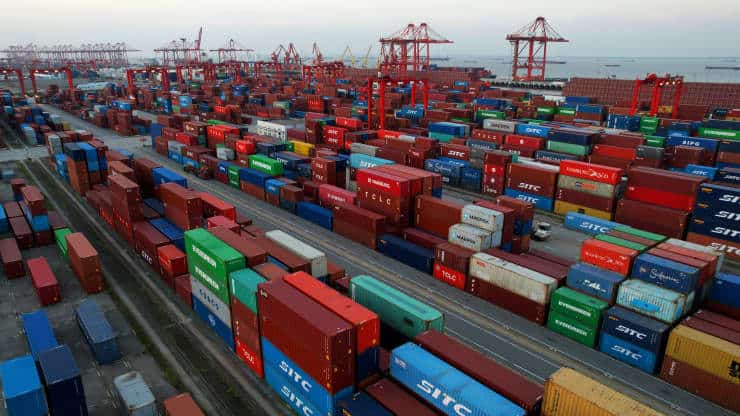BEIJING — China reported disappointing growth in imports in September, while exports beat expectations, according to data released Wednesday by the customs agency.
Imports in U.S. dollar terms rose 17.6% last month from a year ago to $240 billion. That’s less than the 20% estimated by analysts polled by Reuters.
China’s sales of goods to other countries remained a bright spot for the economy. Exports in U.S. dollar terms surged 28.1% year-on-year in September to $305.74 billion, beating the 21% growth figure expected by the Reuters poll.
China’s trade surplus with the U.S. rose to a monthly record of $42 billion — exports surged by about 30% from a year ago, while imports climbed by just under 17%. The U.S. remained China’s largest trade partner on a single-country basis.
The volume of Chinese imports of soybeans, of which the U.S. is the largest supplier, fell 30% in September from a year ago, although the value in U.S. dollar terms rose by about 10%.
Paying up for coal
China’s imports of coal and related products surged 76% from a year ago in September to 32.9 million tons — the highest monthly level since December. The value of those coal imports more than tripled year-on-year to $3.91 billion.
Prices for thermal coal, the primary fuel for electricity production, have more than doubled this year, according to futures traded on the Zhengzhou Commodity Exchange. A shortage of coal has forced power cuts at factories, and prompted authorities to call for more coal imports, including from Russia.
Chinese imports of natural gas rose 21.8% year-on-year to 10.6 million tons in September, at a value that more than doubled to $5.19 billion.
However, purchases of crude oil declined by 15.2% from a year ago to 41.1 million tons last month, while the value of those imports surged by 35%. The U.S. was the largest producer of crude oil last year, and China was the top destination for U.S. exports of the commodity, accounting for 15% according to the U.S. Energy Information Administration.
A breakdown of China’s coal imports by country wasn’t available as of midday Wednesday.
Australia was once China’s largest source of imported thermal coal. But China stopped its purchases of Australian coal in late 2020 as political tensions escalated after Australia supported an investigation into how Beijing handled the coronavirus pandemic.
Customs data Wednesday showed Chinese imports from Australia surged about 50% year-on-year to $15.04 billion in September, while exports climbed nearly 24% year-on-year to about $6 billion.

